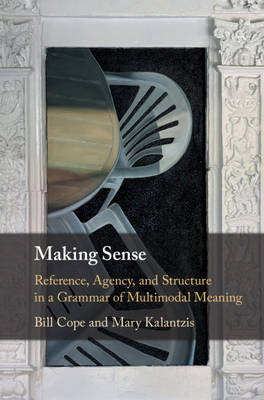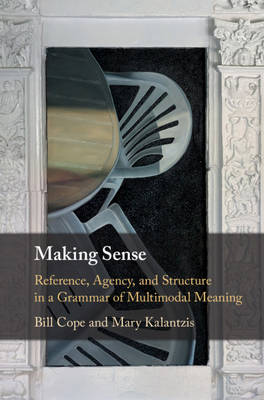
- Afhalen na 1 uur in een winkel met voorraad
- Gratis thuislevering in België vanaf € 30
- Ruim aanbod met 7 miljoen producten
- Afhalen na 1 uur in een winkel met voorraad
- Gratis thuislevering in België vanaf € 30
- Ruim aanbod met 7 miljoen producten
Zoeken
Making Sense
Reference, Agency, and Structure in a Grammar of Multimodal Meaning
Bill Cope, Mary Kalantzis
Hardcover | Engels
€ 201,95
+ 403 punten
Omschrijving
The phenomenon of multimodality is central to our everyday interaction. 'Hybrid' modes of communication that combine traditional uses of language with imagery, tagging, hashtags and voice-recognition tools have become the norm. Bringing together concepts of meaning and communication across a range of subject areas, including education, media studies, cultural studies, design and architecture, the authors uncover a multimodal grammar that moves away from rigid and language-centered understandings of meaning. They present the first framework for describing and analysing different forms of meaning across text, image, space, body, sound and speech. Succinct summaries of the main thinkers in the fields of language, communications and semiotics are provided alongside rich examples to illustrate the key arguments. A history of media including the genesis of digital media, Unicode, Emoji, XML and HTML, MP3 and more is covered. This book will stimulate new thinking about the nature of meaning, and life itself, and will serve practitioners and theorists alike.
Specificaties
Betrokkenen
- Auteur(s):
- Uitgeverij:
Inhoud
- Aantal bladzijden:
- 378
- Taal:
- Engels
Eigenschappen
- Productcode (EAN):
- 9781107133303
- Verschijningsdatum:
- 12/03/2020
- Uitvoering:
- Hardcover
- Formaat:
- Genaaid
- Afmetingen:
- 175 mm x 231 mm
- Gewicht:
- 635 g

Alleen bij Standaard Boekhandel
+ 403 punten op je klantenkaart van Standaard Boekhandel
Beoordelingen
We publiceren alleen reviews die voldoen aan de voorwaarden voor reviews. Bekijk onze voorwaarden voor reviews.











